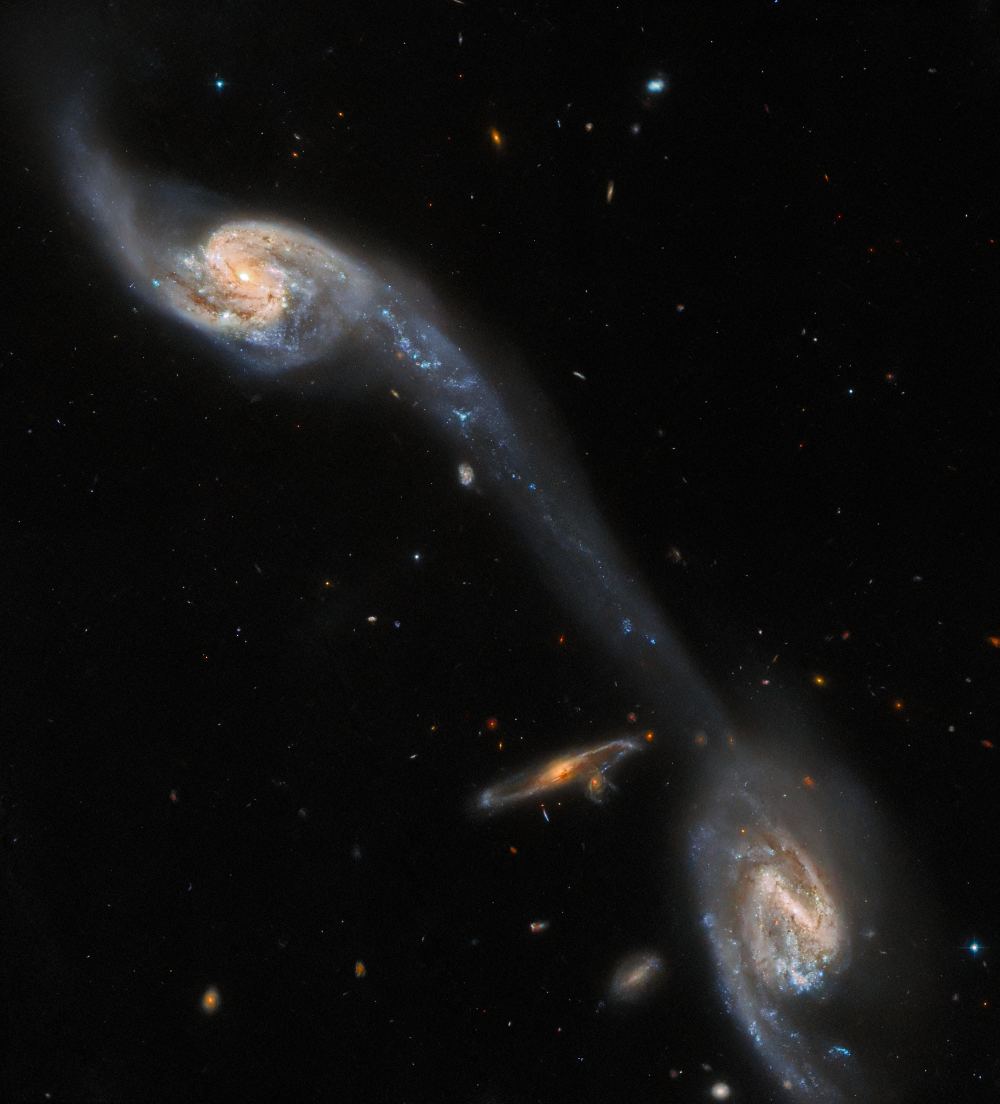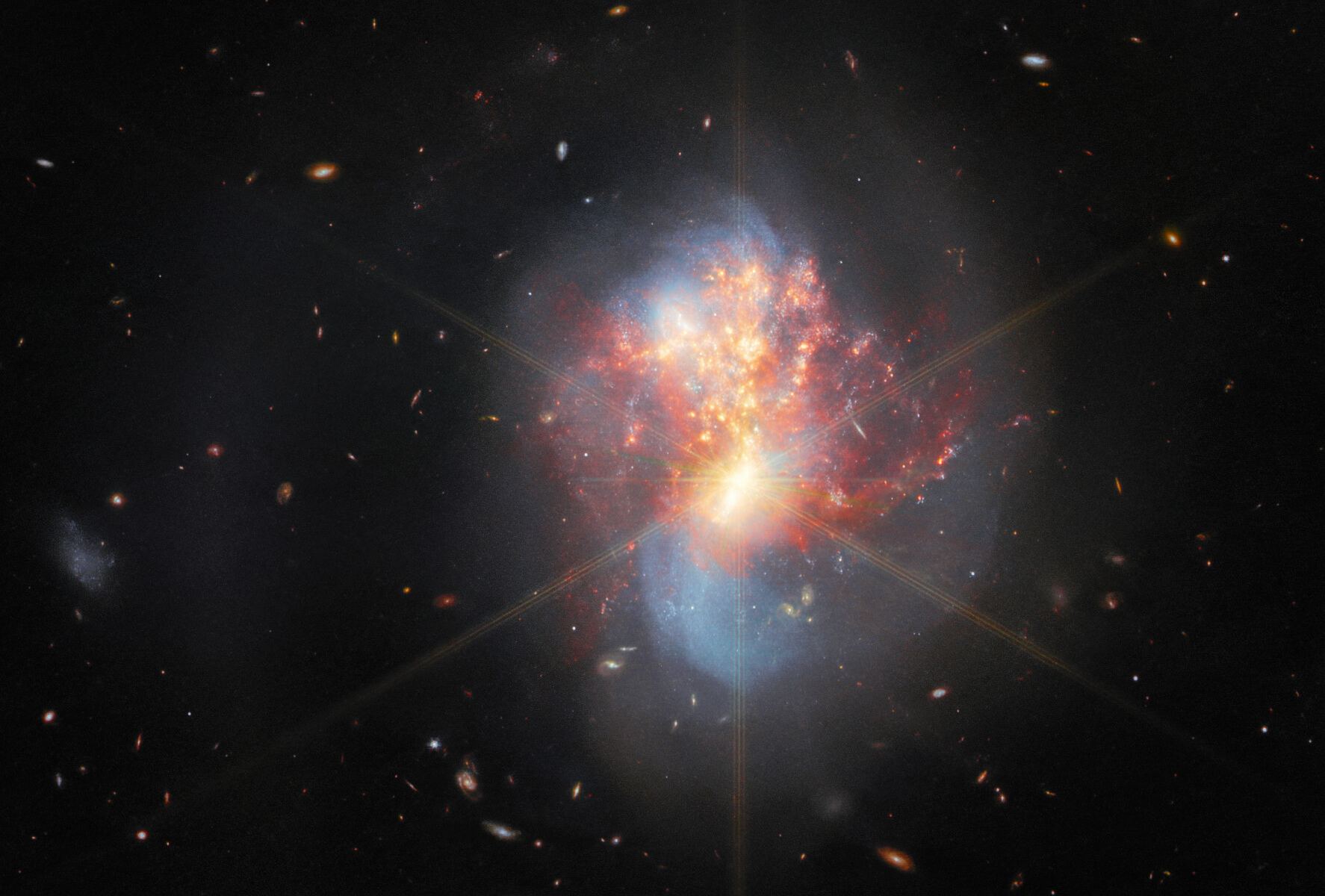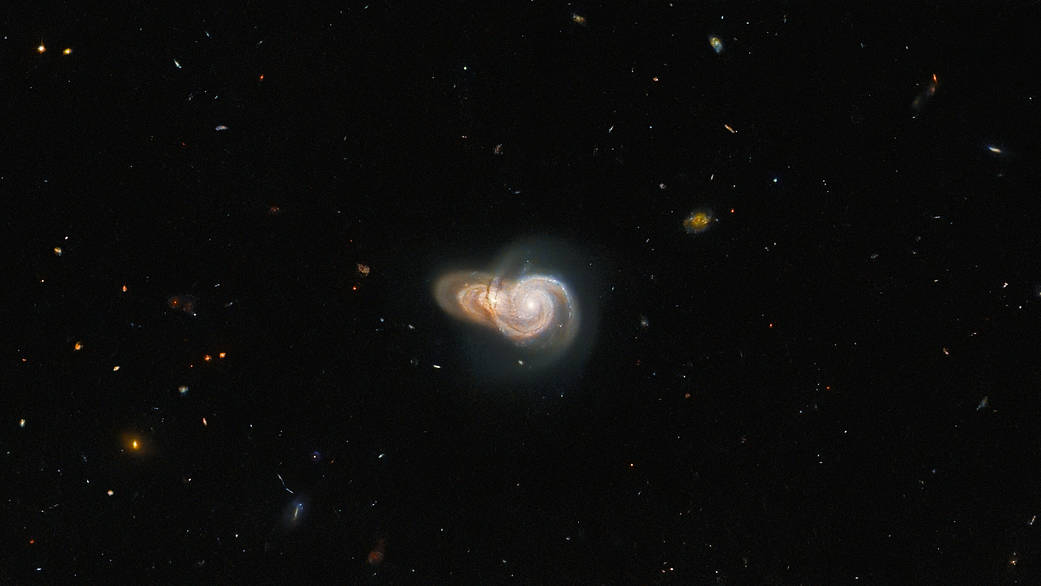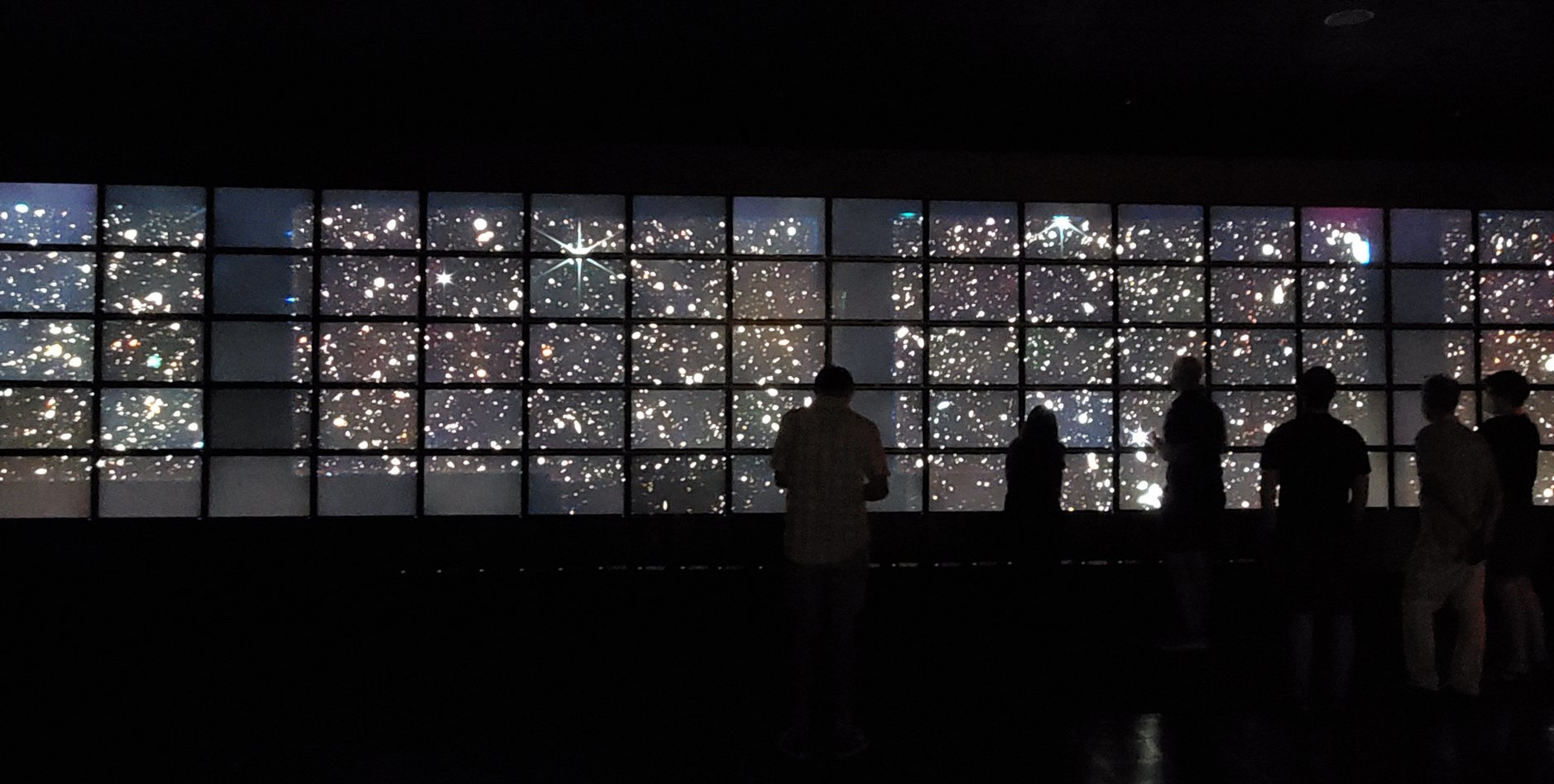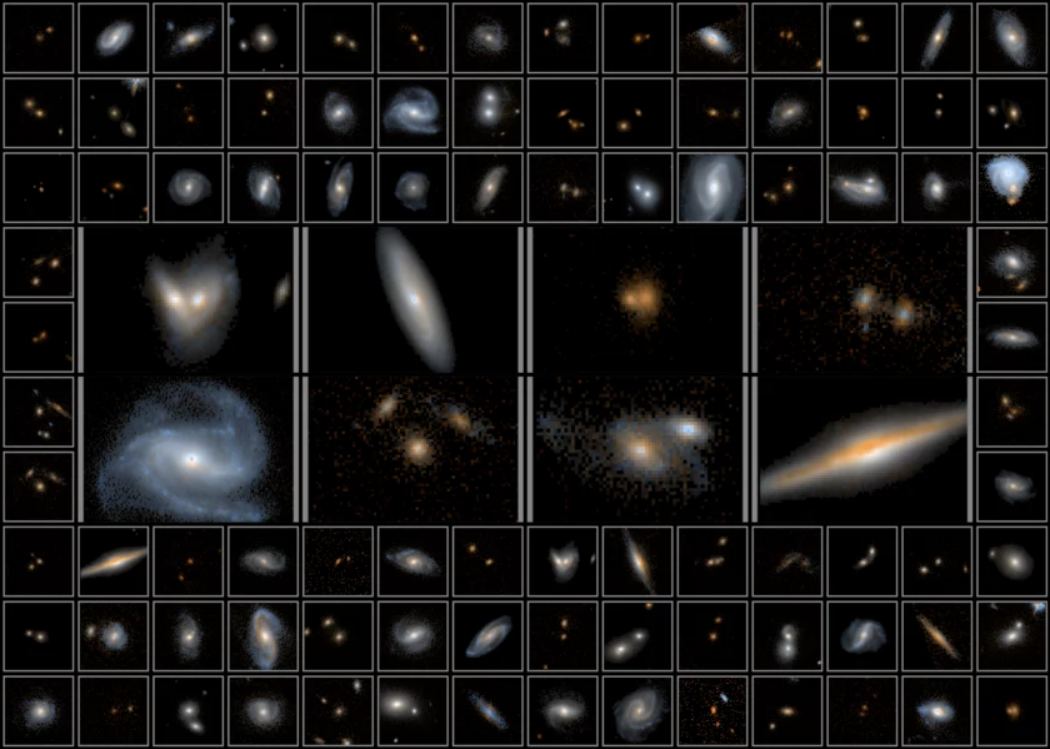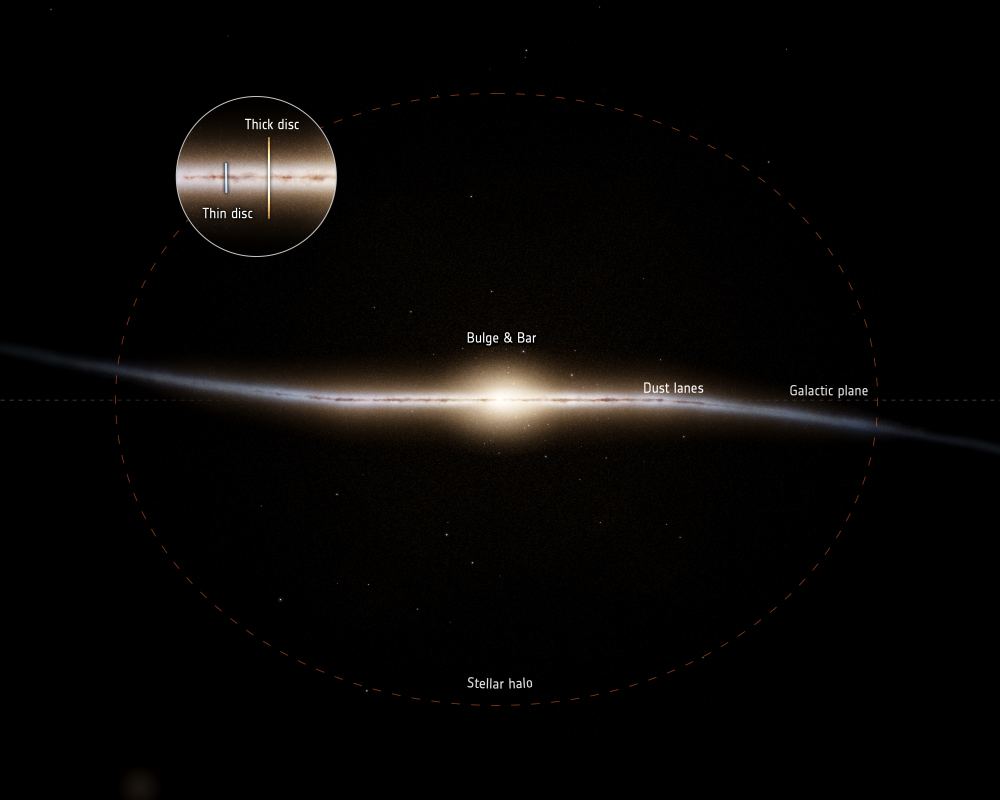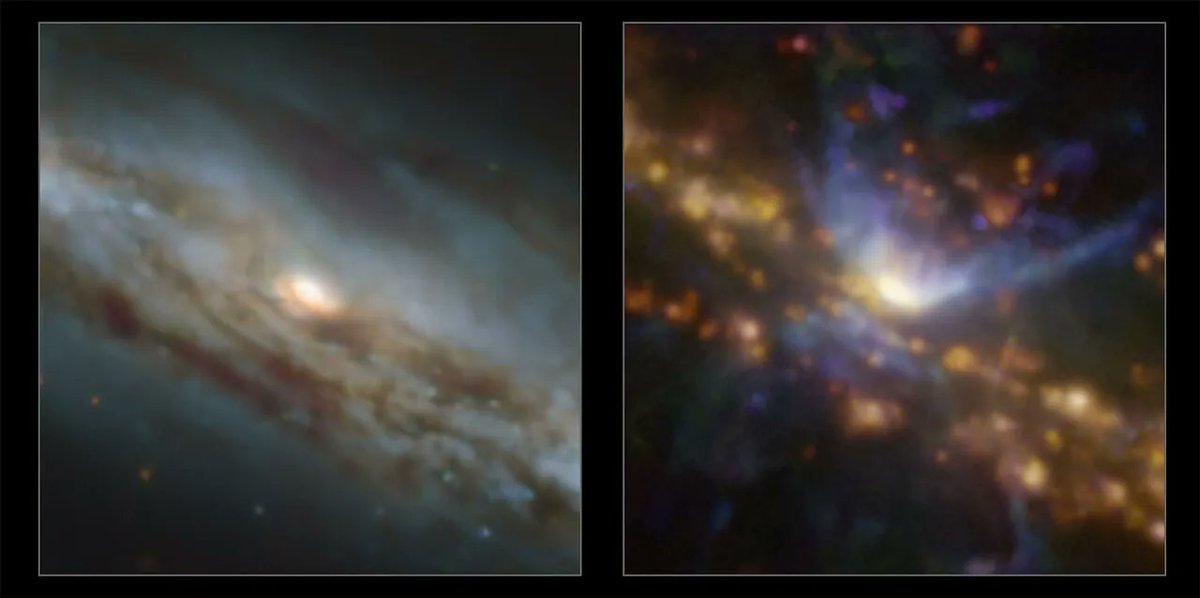Sometimes it’s tempting to imagine a supernatural hand behind the arrangement of celestial bodies. But the Universe is big, huge even, and nature’s flow presents many fascinations.
So it is with the galactic triplet Arp 248, an arrangement of interacting galaxies that’s both visually and scientifically fascinating.
Continue reading “The Perfect Tidal Tail Connects These two Galaxies Seen by Hubble”
